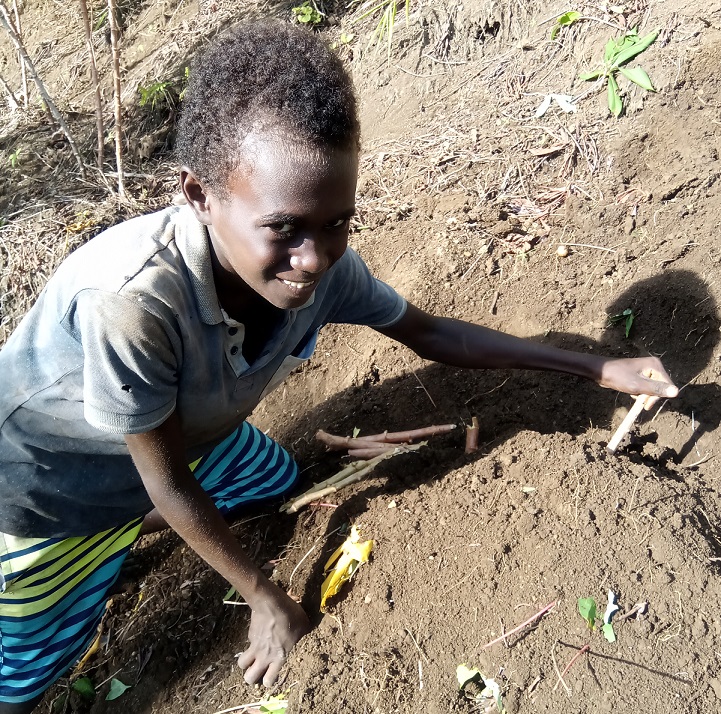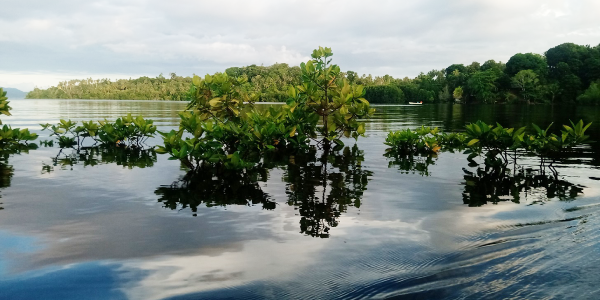Solomon Islands is a country blessed with natural resources both on land and sea.
However, the impact of the climate change and other natural disaster has also brought significant changes to the environment.
As a result the natural vegetation and forest are affected.
Along the coastlines, one of the natural vegetations which is abundant are the mangrove trees.

It is an important source for food as well as providing support to the welfare of our rural families and communities.
Like other islands, Ranoggah in Western Province is also blessed with mangroves.
However, only the northern tip of the island in Buri and Emu Harbour villages are blessed with large areas of mangroves growing at the coast and inside the harbour.
The rest of the island, from central to southern tip were surrounded by sandy shorelines and rocks.
Because of that villagers at these two villages are able to use mangroves pods as their main source of food, sticks and woods to build homes, firewood for cooking and it also offers an ideal spot for fishing.
It can also be a breeding ground sea for crocodiles.
Buri has a beautiful harbour which offers an ideal spot for mangroves to grow.
And because of that a good number of homes have been built along the coast inside the mangroves.
These mangroves trees act as barriers from strong wind and tides.
However, due to increase threat from sea level rise brought about by climate change, some of the once dried lands, are now covered with sea.

And because of that to help protect the shoreline, a number of villagers have decided to take up the initiative to conduct a replanting exercise in front of their shorelines.
A resident O’Neil Ronson decided to undertake mangrove replanting over the past months just in front of their family’s shoreline.
And the results have been rewarding because already the new plants have grown up and are looking healthy.
Other young mangrove plants have died because of extreme heat or were being eaten by crabs.
As the tide continues to rise, a good number of gardening sites have been lost and now being left in a bare state.
Apart from O’Neil there are other villagers who realised the importance of replanting mangroves to protect their homes and coastlines.
Young Daniel is one of them who is also planning to do replanting this year given the threat from sea level rise to their home located by the coast.
He told this paper, its going to be a busy year ahead to start replanting.
A visit by the paper to Buri in the past weeks saw large portion of coast lines now being covered with seawater.
And because of that, more villagers are planning to do replanting in front of their shorelines in order to protect the soil from further erosion and further.
Another local villager Linet Joseph said, with continuous sea level rise, more of the fertile soil along the coasts have been affected by sea.
She also lost her garden spot along the coast.

Now, the plan is to convert the once garden spot into a mangrove forest in an effort to protect the coastline and also benefit from the mangrove trees.
“It’s an important source of food for us. So its good to start replanting,” she said.
As a result, the option now is to plant mangrove to replace the once dried land inorder to project the coastlines, she added.
According to The Nature Conservancy, mangroves are important to pacific island people because they help stabilize our coastline ecosystem and prevent erosion.
Mangroves provide natural infrastructure and protection to nearby populated areas by preventing erosion and absorbing storm surge impacts during extreme weather events such as king tide and cyclone.
By Moffat Mamu
Western Province, Gizo









